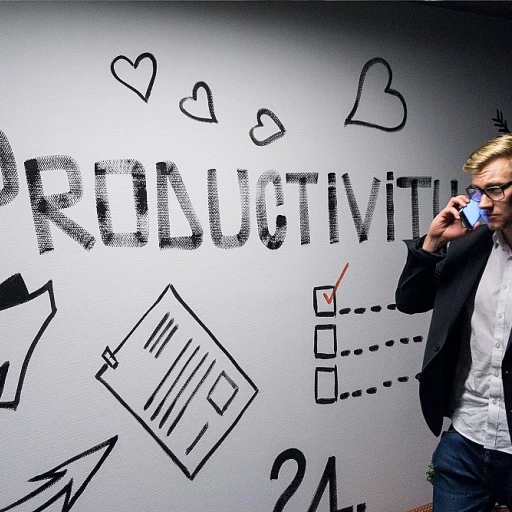
Understanding the Importance of Career Development Programs
The Role of Career Development in Modern Organizations
In today's fast-paced business environment, career development programs have become a cornerstone for organizations aiming to foster employee engagement and retention. These programs are not just about offering training sessions or workshops; they are about creating a structured framework that supports the long-term career growth of employees. By aligning employee development goals with the company's objectives, organizations can cultivate a workforce that is both motivated and skilled.
Why Career Development Matters
Career development is crucial for both employees and employers. For employees, it provides a clear path for career progression, helping them to set and achieve their career goals. This not only enhances their skills but also boosts their confidence and job satisfaction. For employers, a well-structured development plan can lead to increased productivity and innovation. It helps in building a talent pool that is ready to take on leadership roles, ensuring the company's success in the long term.
Benefits of Implementing Career Development Programs
- Enhanced Employee Engagement: Employees who see a clear path for growth within the company are more likely to be engaged and committed to their roles.
- Improved Retention Rates: Organizations that invest in employee development often experience lower turnover rates, saving on recruitment and training costs.
- Skill Enhancement: Regular training and development opportunities help employees acquire new skills, keeping the organization competitive in the market.
- Leadership Development: By identifying and nurturing potential leaders, companies can ensure a smooth transition in leadership roles.
For more insights on how to unlock the potential of highly effective individuals, you can explore this resource.
Identifying Key Components of a Successful Program
Key Elements for Program Success
Crafting effective career development initiatives requires a thoughtful approach to ensure they are comprehensive and impactful. By focusing on key components, organizations can create programs that truly benefit both employees and the company.Identifying Development Goals
Every employee has unique career goals. Organizations should aim to identify and align these with their broader objectives. This alignment helps in setting clear career paths and determines the specific skills that need development. By doing so, employees are more engaged and motivated, seeing a tangible progression framework within the company.Training and Learning Opportunities
To facilitate career growth, offering diverse learning development opportunities is crucial. These can include workshops, online courses, or dedicated training sessions. Providing resources for leadership skills development and practical training helps employees bridge skill gaps, fueling both their professional development and the company's growth.Customized Career Plans
Tailoring development plans to individual employee needs within the organizational goals ensures that the programs are personal and effective. A one-size-fits-all approach may not work for everyone, so it's important to develop flexible plans that can adapt to the varying demands and aspirations of employees.Formal and Informal Mentoring
Implementing mentorship as a core element allows for knowledge sharing and deeper learning connections. Mentors can help employees navigate their career progression by offering insights, advice, and feedback on their development plans. To further explore the impact and implementation of mentorship, check out this insightful article on crafting impactful mentor relationships.Tracking Progress and Continuous Evaluation
Measuring the success of career development programs is essential to ensure that they meet employee and organizational needs. Establishing benchmarks and checkpoints within the program allows for ongoing assessment and adjustments where necessary. By regularly evaluating the effectiveness and reception of these initiatives, organizations can ensure resources remain aligned with long-term goals and desired outcomes.Tailoring Programs to Fit Organizational Needs
Customization: The Key to Success
A vital aspect of establishing effective career development programs in corporations is ensuring that they align with the unique needs and strategic objectives of the organization. This approach involves the adaptation of career development plans to fit the culture, industry demands, and specific goals of the company. By doing so, these programs can better support employee growth and encourage career progression, ultimately benefiting both the employees and the organization.
To achieve this alignment, organizations should begin by assessing their current resources and identifying gaps in employee skills and capabilities. The insights gathered during this assessment help create tailored professional development opportunities that speak directly to the company’s needs and aspirations.
- Engagement with Leadership: Leadership plays a crucial role in customizing career development programs. Engaging top management can facilitate the integration of leadership goals into the employee development strategy, promoting a unified direction for growth and progression.
- Employee Feedback: Gathering input from employees about their development goals not only increases their engagement but also ensures that career paths are aligned with both personal aspirations and organizational objectives.
- Flexibility in Training and Mentorship: Offering flexible learning development opportunities, such as workshops, online courses, or coaching sessions, ensures that employees can enhance their skills in a way that complements their schedules and career goals. Implementing mentorship as a core element further facilitates knowledge transfer and professional support.
Ultimately, the customization of career development plans helps create an environment where employees can thrive, achieving both short-term objectives and long-term growth. This tailored approach fosters an adaptation culture and strengthens employee engagement, which in turn, contributes to the overall success of the development programs.
Implementing Mentorship as a Core Element
The Role of Mentorship in Employee Growth
Implementing mentorship within career development programs can significantly benefit both employees and organizations. Mentorship serves as a transformational tool for empowering employees to reach their potential and align their goals with the company’s strategic objectives. Mentorship initiatives create a bridge between the theoretical and practical, allowing employees to refine their skills and apply their learning in real-world scenarios. This direct transfer of knowledge assists employees in their career progression and helps foster a culture of continuous development and lifelong learning.- Cultivating a Growth Mindset: Mentorship nurtures a growth mindset in employees, encouraging them to seek opportunities for development and engage in proactive training plans. This mindset is critical for adapting to evolving industry dynamics and embracing new career paths.
- Customized Guidance: By pairing employees with experienced mentors, organizations provide personalized support and guidance. Mentors can share insights, offer advice on navigating career progression frameworks, and help employees create actionable development plans to achieve their long-term career goals.
- Fostering Engagement and Motivation: A structured mentoring program enhances employee engagement and motivation. Employees are more likely to remain committed to their development goals and the company’s mission when they feel supported on their journey toward career growth and leadership roles.
Measuring the Impact of Career Development Initiatives
Evaluating the Success of Development Initiatives
The assessment of career development programs is pivotal in determining their effectiveness. Businesses continuously aim to align their employee development efforts with both organizational and individual needs. By establishing clear metrics for success, organizations can measure the impact of their programs on employee engagement, skill acquisition, and business outcomes.
Implementing a robust evaluation plan is critical. Companies should employ a combination of quantitative and qualitative methodologies to gather insights into program effectiveness. Employee feedback, surveys, performance metrics, and career progression statistics provide invaluable data for assessing development goals.
One must consider several key performance indicators (KPIs) in this assessment:
- Employee Career Growth: Assessing the progression of employees along their career paths can highlight the effectiveness of the development framework.
- Skill Enhancement: Evaluating the skills employees acquire through learning and training development aligns with achievement of career goals.
- Leadership Development: Identifying future leaders within the organization and tracking their journey through leadership roles is essential for long term company success.
- Employee Engagement: Higher engagement typically correlates with successful professional development, indicating employees are more satisfied with their career development plans.
Additionally, companies should engage in reflective practices to continually refine their programs. This involves revisiting development plans often, determining where adjustments are necessary, and ensuring resources are efficiently allocated. Actively involving employees in the feedback process will not only help in fine-tuning the programs but will also create a sense of ownership and motivation.
When assessing results, businesses should not only focus on immediate outcomes but also consider the long-term implications of their employee development programs. By marrying the employees' aspirations with the organization's strategic objectives, companies will cultivate an environment conducive to sustained growth and satisfaction.












